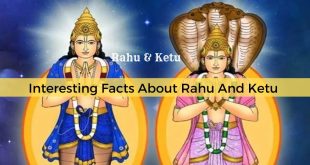Related Articles
Saptamsa Varga
By
Ernst Wilhelm
Brihat Parashara Hora Shastra states that the Saptamsa indicates children and grandchildren. This fact may come as a surprise since it is the 5th house that indicates children, not the 7th house.
Children are, however, the result of sexual intercourse, which is ruled by the 7th Bhava and so the Saptamsa is taken for examining the likelihood of offspring. More than just that, however, the Saptamsa indicates the productivity of a relationship. Whether a person will or will not be involved with someone with whom they will co-create something unique is determined by the Saptamsa.
In some relationships two people are in love and partnership but they do not really do anything different or produce anything more than if they were not in the relationship – this is indicated by problems in the Saptamsa and such a relationship is ultimately a waste of time as it does not create a more fulfilling future for oneself or society.
A favorable Saptamsa indicates that a person is productive with their partner and that they do something different on account of that partnership and ideally those things will grow to take on a life of their own and create their own children.
Those children will then produce more children and thus a person’s dynasty is established. These children can be literal children, or they may be something other thing or even an ideal that is produced that lives on long after the individual passes. Essentially, the Saptamsa indicates the dynasty of the individual, which is most often their children, but occasionally something else. A dynasty is that which we create and leave behind us when we pass, since the 7th Bhava is the death inflicting Bhava, its Varga, the Saptamsa, represents the dynasty.
Please go to Astrology-videos.com to watch three free in-depth videos that cover the information presented in the remainder of this article. Please watch these videos as you go through the rest of this article as this article is just a fragment of the information presented in the videos.
saptäàçapästvojagåhe gaëanéyä nijeçataù
yugmaräçau tu vijneyäù saptamarkñädinäyakät.
kñär-kñérau ca dadhyäjyau tathekñurasasambhavaù
madhyaçuddhajalävoje same çuddhajalädikäù.
“The Saptamsa in an odd Rasi are counted from that, in an even Rasi know these starting from the 7th from that. Kshaara and Kshiira, Dadhya and Ajya, then Ikshurasa, Madhu and Suddhajala are produced in an odd; in an even Suddhajala, etc.”
Brihat Parashara Hora Shastra: Shodasavargas, 10-11
“35. There are portions (of each sign), they say, belonging to the seven planets, and these (saptamsas) undergo modifications according to the planet.
- They say that the saptamsas belong to the lords of the signs (in order) beginning with the lord of the sign itself and excluding repetitions.”
- –Yavana Jataka, Chapter 1, Sutras 34-40
This idea of planetary rulers for each Saptamasa from Yavana Jataka may be a valid idea, but it is a completely different concept which has nothing to do with actual Varga charts. It is, however, an important concept that Yavana Jataka uses later in the text. I have not round the results due to this arrangement of Saptamsa planetary lords to work out all that well, rather, I have had better luck with associating the Grahas to the Saptamsas by taking the regular order of the Grahas (Sun-Saturn) and reversing that order for even Rasis.
Saptamsa Deities
The Saptamsa Deities are not actually deities in a mythological sense but rather substances that are endowed with powerfully creative energies, the energies used by the divine to create and generate offspring. Notice that all these substances are liquids due to the fact that the Saptamsa is a water element Varga – it is the water element which is responsible for generation. Additionally, the vitality of a substance is released when it is dissolved in water or in some liquid form so that it can flow forth and do its job.
Kshaara – any corrosive liquid such as saline, alkali, acid, etc.
Kshiira – milk of any type including the milk of plants.
Dadhya – coagulated milk, thick sour milk, yogurt.
Ajya – melted ghee or melted butter. This word is usually replaced with Ghritha by the translators of Brihat Parashara Hora Shastra, with the same meaning.
Ikshurasa – sugar-cane juice.
Madhu – honey.
Suddhajala – pure water.
Kshaara symbolizes pent up vital energy that can become damaging to oneself and frustrating.
Kshiira represents vital energy ready for the taking – ready to be used to create something wonderful.
Dadhya represents vital energy that can be transformed into the energy required to fulfill the creative need.
Ajya represents a high state of nourishment and is perhaps the strongest Saptamsa for generating a dynasty.
Ikshurasa provides the sheer energy with which to create, a high energized Saptamsa.
Madhu represents an almost equally high energy but one that is more focused along one line of desire – it sticks to something just as does honey.
Suddhajala represents vibrant creative energy that naturally takes its place in whatever creative venture it finds itself in – no agenda, just acceptance of its creative role.
Most Important Graha In The Saptamsa
The Saptamsa is the fifth Varga mentioned by Brihat Parashara Hora Shastra and so the fifth Graha, Jupiter, is the most important to consider in the Saptamsa. Jupiter in the Saptamsa represents the creative energy and intelligence that can be successfully joined with that of another or with that of the public.
Important Bhavas In The Saptamsa
7th Bhava: The primary Bhava to consider in the Saptamsa due to the Saptamsa being the 7th Varga. In the average horoscope whose greatest achievement that outlives him are his children, the 7th Bhava in the Saptamsa represents ability to conceive children. In the horoscope of a great person who has a dynasty of business, wealth, knowledge or ideals to leave behind, the 7th additionally represents the public and how they appreciate these things – the more the public appreciates these things, the greater the dynasty.
1st Bhava: Adding up all the numbers in 7 yields the number 1 and so the 1st Bhava is an important secondary Bhava to consider in the Saptamsa. The 1st Bhava in the Saptamsa represents the individual’s ability to procreate and the path that leads to the creation of their dynasty.
4th Bhava: Squaring 7 yields the number 4 and so the 4th Bhava is an important Bhava to consider in the Saptamsa. The 4th Bhava in the Saptamsa represents the wealth and real estate available to the person for the purpose of the nurturing and care of their dynasty. In respect to those individual’s dynasty that is above and beyond children, the 4th represents the foundation of their work which they leave after they pass.
After considering Jupiter and these three Bhavas to access the general condition of the Saptamsa the individual’s capacity to create a lasting dynasty of some sort is revealed.
Learn Astrology: Join Our Upcoming Astrology Classes – Click Here
Learn Astrology: Join Our Recorded Astrology Classes – Click Here
 Saptarishis Astrology Magazine Into Creating Astrologers
Saptarishis Astrology Magazine Into Creating Astrologers






